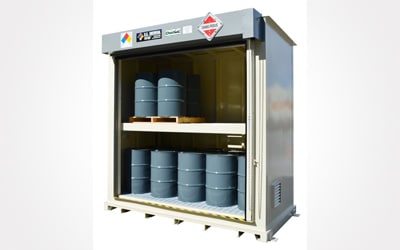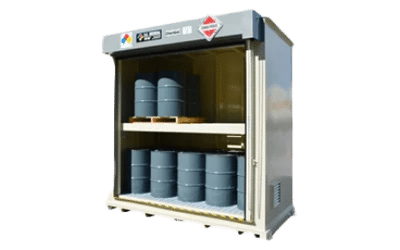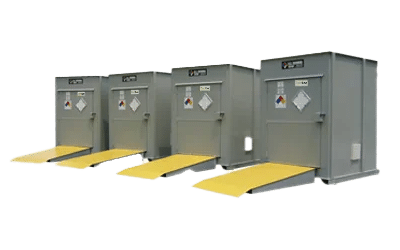DrumLoc™ Chemical Drum Storage Buildings
U.S. Chemical Storage provides exceptional chemical drum storage protection, security, and versatility with DrumLoc™ non-fire rated chemical storage buildings. These chemical drum storage units have countless applications and can be engineered to fit your specific storage needs.

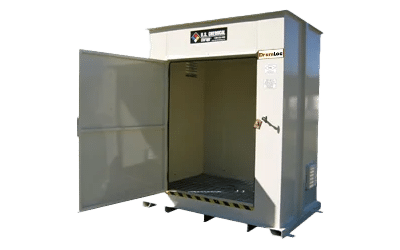
DrumLoc’s non fire-rated construction comes standard and is a cost-effective, durable solution for non fire-rated chemical storage.
Whether storing hazardous materials or other chemical drums, there is a DrumLoc option for your project. This precision engineering allows your team to create efficiencies in its manufacturing process by safely storing chemicals drums onsite and within easy reach of your trained professionals.
55-Gallon Drum Storage Solutions
U.S. Chemical Storage ensures your hazardous materials will be protected from many environmental factors with built-in secondary containment and bolt-down plates. Our buildings are designed so your drums can be stored in safely when located at least 30 feet from any structure.*
All DrumLoc units are 100% customizable. Each chemical drum storage building can be outfitted to hold from two to 56 drums and will accept a variety of accessories to make operations flow safely and smoothly. Our non-fire rated DrumLoc chemical drum storage buildings are designed to reduce contamination, decrease storage risks, and streamline your costs whether it be insurance, deliveries, or manufacturing.
*Always consult your local authority with jurisdiction to ensure that all rules and regulations are followed, including proper setback requirements.
Features & Benefits
- Continuously welded, leak-tested sump
- Static ground connections
- Galvanized steel grate floor
- Forklift channels for easy relocation
- Available climate control
- 15-year structural warranty
- Chemical and UV resistant coating
- Natural draft ventilation
- 3-point lock door hardware
- Coal tar undercoating for corrosion protection
- Meets EPA, NFPA 30 and NFPA 1
- Fully customizable
Common Applications
- Agricultural Chemical Storage
- Pesticide Storage
- Fertilizer Storage
Downloadable Information & Fact Sheets
Compliance & Approvals
At U.S. Chemical Storage we strive to give you the best solution for your operations. This building and its accompanying accessories can be engineered to meet the following approvals and certifications based upon your unique set of needs.
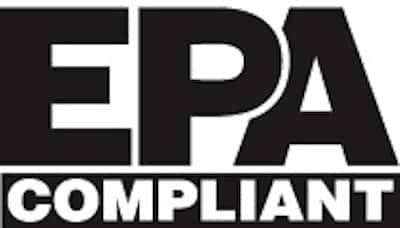
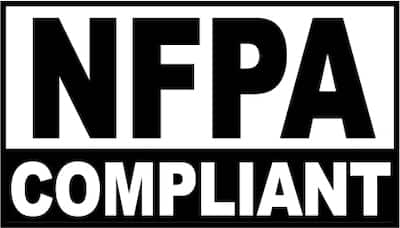
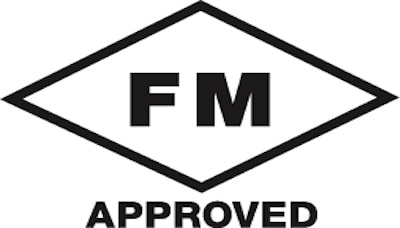
Frequently Asked Questions
Location of the building can be either inside another building or outside to fit your needs. Fire Separation, which is the amount of fire rating required between two occupancies, or the separation distance between those two occupancies, is determined by the type of chemical or hazard being stored, and distances between buildings, egress pathways, or environmental features.
To determine the required fire separation, it is best to consult with your local code authority. Inside another building or within 10 feet of another building, you’ll be required to have a 4-hour fire rating. If your hazmat storage building is located at distances 30 feet or greater your building may not be required to have a fire rating at all.
Start by speaking with one of our experienced Technical Sales Engineers to learn about the needs of your application. They will want to know what type of chemicals you are storing? How much of it will you be storing? What proximity to other buildings, people, egress paths, or environmental features will it need to be? Do you require special spill containment?
And from there they’ll ask any related questions that determine additional options; Material Handling – Climate Control – Ventilation – Occupancy – Lights – Sensors – Alarms – Door Styles – Eyewash Stations and other requirements are not uncommon. Answers to these questions will dictate the building’s fire rating construction as well as anything else you’ll need for proper code compliance.
The definition of a “sump” is a pit or reservoir providing containment for spilled liquids. U.S. Chemical Storage offers leak-proof spill containment sumps in each standard model. All our sumps are tested for leaks for a 24-hour period prior to finishing. The sump is then covered by a steel or fiberglass floor grating and can even be equipped with a resistant plastic sump liner to protect against corrosive chemical accidental spills. The size of the sump is dictated by code based on the volume of liquid being stored within the building.
Request a Quote
RELATED PRODUCTS
ChemLoc™ Chemical Storage Buildings
For unparalleled protection, use non fire-rated hazardous chemical storage buildings for storing flammable or combustible chemicals at least 30 feet from other buildings. These chemical storage units have countless applications and accessories that can be custom engineered to fit your specific needs.
TurfLoc™ Agri-Chemical Storage Buildings
TurfLoc™ is the ideal non-fire rated chemical storage building for turf maintenance and agricultural professionals. Designed for herbicide, fungicide, and pesticide storage, the flexible design of TurfLoc also makes it suitable for fertilizer and other agrichemicals.

YOUR PARTNER IN THE PROCESS. EXPERIENCE YOU CAN TRUST.
We deliver the precise building solution with the speed, security, and high quality that you demand.

